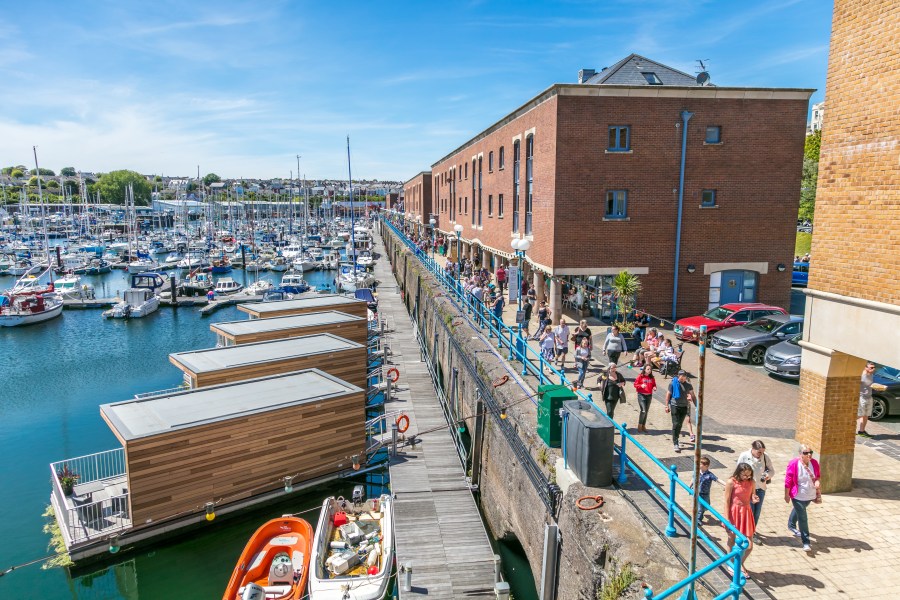SU CARROLL rounds up the very best sights to see, activities and things to do in July along the coast.
1. Making an impression
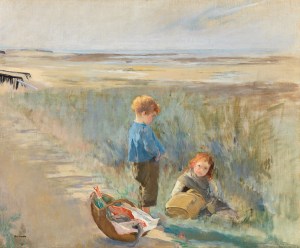
The National Gallery of Ireland celebrates the 150th anniversary of the first Impressionist exhibition in Paris in 1874 with collection of around 60 works loaned from collections around the world.
Women Impressionists focuses on four women artists associated with Impressionism – Berthe Morisot (1841-1895), Eva Gonzalès (1849-1883), Marie Bracquemond (1860-1914), and Mary Cassatt (1844-1926).
Impressionist artists are renowned for using friends and family members as models and this is especially so for women who had relatively restricted access to professional models and social spaces. In the intimacy of homes and gardens they painted their husbands, mothers, sisters, children, nieces, and nephews. These artists did not only look inwards; they looked at the world around them, to contemporary artists, and to art history through prints and copies, as well as visits to museums and galleries.
This exhibition in Dublin explores how each of these artists navigated complex personal and professional networks to create and exhibit their art. It highlights their collective desire to make modern art and shows how they interpreted the evolving idea of Impressionism in individual ways.
Highlights include Eva Gonzales’ Children on the Sand Dunes, Grandcamp (1877-78, pictured). Until October 6, nationalgallery.ie
LOCALS LOVE
Imagine a museum which tells the story of Dublin. Everything from a visit by Queen Victoria to the global success of U2. The Little Museum of Dublin, housed in a beautiful Georgian building at the heart of the city, has a variety of collections created by public donation. Entry to the museum is by guided tour after which you are free to explore. As number one museum in Ireland on Trip Advisor, book in advance. littlemuseum.ie
2. Gower power
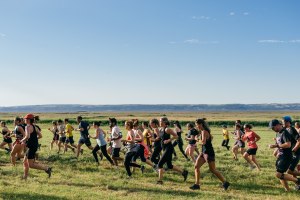
The breath-taking Gower Peninsula, with its lush green landscapes and pristine beaches, provides the spectacular backdrop for the Love Trails Festival. The event is all about embracing the great outdoors, celebrating music, adventure activities, trail running, movement and yoga.
The world’s first running and music festival offers outdoor runs exploring the amazing local trails with distances and paces for all abilities. The event has grown to offer hiking and swimming adventures, a whole range of movement workshops, and even action sports activities.
The Gower Peninsula, a designated Area of Outstanding Natural Beauty, offers a multitude of adventures. Try your hand at surfing, paddleboarding, or rock climbing or just relax on the beach, or soak in the wood-fired hot tubs on the festival site.
The music line-up includes dynamic dance duo AJOY (Anonymous) and pop folk band Stornoway, known for their joyful, high energy and emotional songs about the natural world, love and folklore. The eclectic line-up also includes the infectious beats and uplifting melodies of Gonora Sounds, a family band from Zimbabwe, and the nine-piece brass behemoth Riot Jazz Brass Band from Manchester, known for their unique take on covers. July 11-14, lovetrailsfestival.co.uk
LOCALS LOVE
The wetlands and forest of Oxwich Bay Nature Reserve provide a rich variety of habitats for plants and wildlife and backs on to a two-and-a-half mile long beach, flanked by two headlands. Due to the chalky environment in the dunes, you’ll see uncommon wildflowers such as orchids. Insects thrive in the freshwater lakes, they in turn attract bats that roost nearby. There are two circular waymarked walking trails that take you through the dunes or take a sea safari along the coast towards the Worms Head island. gowercoastadventures.co.uk
3. Small boats
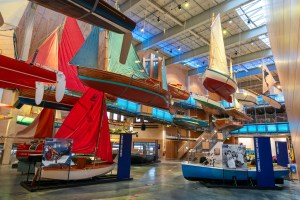
A new permanent exhibition at the National Maritime Museum Cornwall, Small Boats, Big Stories, highlights the role that small boats play in shaping the world we live in. The museum, already home to the National Small Boat Collection, will display 11 small boats from Cornish, UK and global history.
They include the smallest boat to cross the Atlantic (measuring just 5ft 4in), a boat that won UK Olympic Gold and the Ednamair – a small dinghy on which the Robinson family survived for more than a month after becoming shipwrecked in the Pacific Ocean following a killer whale attack.
You can also see a traditional Iraqi Quaffa, a replica of a Viking Faering and NMMC’s newly-acquired small ‘migrant’ Zodiac boat – a symbol of one of the most significant and socially relevant issues of our times. Given to the museum by the UK Border Force, the inflatable was intercepted by a passing tanker in the English Channel in November 2018, with its five occupants later brought to Falmouth.
Audiences will also gain an insight into small boats of the future, through the display of the AutoNaut, a prototype for a pollution-free research vessel, which harnesses energy from the rise and fall of waves.
Together, the boats paint a rich picture of how small boats can not only play a pivotal role in fishing, transport, sport, science and migration but also tell some of the most powerful stories of our times. nmmc.co.uk
LOCALS LOVE
The Gardens at Enys near Falmouth are perhaps the oldest in Cornwall, and are mentioned in ancient texts. They were laid out in the popular Italianate style in the 18th century but in the early 19th century they were altered to less formal gardens, Over the 30 acres you will find an open meadow, ponds with a waterwheel, flower gardens, stumpery, orchard, pinetum and some beautiful specialist trees. Check online for opening: enysgardens.org.uk
4. Coastal canvases
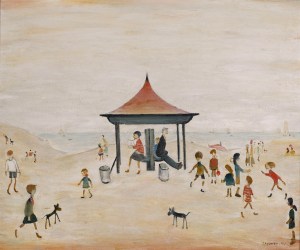
Although best known for his industrial paintings of Manchester and the surrounding area, artist LS Lowry began visiting the north east of England from the 1930s, with his first visit to Berwick-upon-Tweed around 1935. He became a regular visitor to the town until his death in 1976 capturing the town’s streets and buildings and views of the North Sea.
Lowry was fascinated by the sea and had first been drawn to it as an art subject at just eight years old and it had by now become increasingly important in his work Similar to his famed industrial works, he found an equally mysterious mood in the waves and winds as he did in the smoke of Salford.
The Granary Gallery in Berwick-upon-Tweed has an exhibition, Lowry and the Sea, of his North Sea landscapes, capturing the Northumberland coast over several decades. There are 20 of his works, including oil paintings, as well as drawings in pastel, charcoal, and pencil, both from public and private collections.
Lowry’s relationship with the sea seems to evolve further following the death of his mother in 1939. After a trip to Anglesey, in 1944 he was bored “almost to death” and unable to paint anything. About a month later he was back at home and started to paint the sea – “the sea that I had seen, nothing but the sea. But a sea with no shore and no boat sailing on it – only the sea”. He continued to paint these ‘empty seascapes’ for the rest of his life and two significant works from the 1960s demonstrate this in the exhibition – Seascape (1965, Arts Council Collection) and The Sea (1963, Lowry Collection, Salford).
His 1959 painting, On the Sands (pictured), captures a more upbeat mood with people enjoying the beach. Ends October 13, maltingsberwick.co.uk
LOCALS LOVE
Berwick-upon-Tweed is one of the best-preserved fortified towns in Europe with a fascinating history – the town has changed hands between England and Scotland at least 13 times and was often on the frontline of battles, rebellions, wars and skirmishes. Download a free map for a circular walk with magnificent views from Berwick’s castle, discover how locals have lived alongside the military for centuries and look for evidence of English and Scottish identity. There’s an audio version too. discoveringbritain.org
5. Solo show
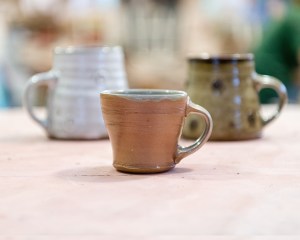
Graduating potter Ellie Woods marks the culmination of her three-year apprenticeship at the Leach Pottery in St Ives with her first solo exhibition which will have around 100 of her pieces. Ellie, from Cumbria, did a Fine Art degree in Liverpool focusing on photography and installation before taking up the apprenticeship role at the Leach Pottery.
An important element of her work is that it is made to be used. “I like the intimacy of creating work that is then being used, for example a mug that I have made being used for people’s morning coffee,” she says.
Ellie is using her experience at the Leach Pottery – which has stood on the same site on Higher Stennack for more than a century – to create her individual style in combination with using the traditional Leach studio glazes. The pottery has begun a two-year transformation project which will include a new learning centre and pottery studio which will mean increasing production to keep up with growing demand. The project will also include a new-look museum, gallery, shop and café. Ellie Woods: An Apprenticeship, July 20-August 18. leachpottery.com
LOCALS LOVE
Visit the island that isn’t an island! A narrow stretch of land joins The Island to the main town of St Ives. Cross over and be treated to spectacular views and the glimpse of the odd seal.
The National Coastwatch Station at its peak was a Victorian coastal battery that also saw action during the Second World War. At the other end stands a chapel dedicated to St Nicholas, patron saint of sailors. stives-cornwall.co.uk
6. Bloomin’ brilliant
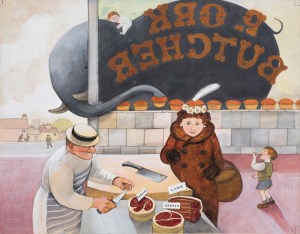
Anyone with children and grandchildren will be familiar with the amazing art of Raymond Briggs through his books – The Snowman, Father Christmas, Fungus the Bogeyman and When the Wind Blows. A new exhibition at Ditchling Museum of Art and Craft brings together never-seen-before items and artworks in the part of East Sussex that he made his home.
Bloomin’ Brilliant: The Life and Work of Raymond Briggs is a highly personal show with 30 items from the late author´s estate and over 100 original artworks from his 60-year career.
This exhibition includes work from his pioneering titles, delving into the origin and creation of these classic images and stories. Also on show are his drawings (including The Elephant and the Bad Baby, pictured), hand-lettered typography and page designs from his earliest commissions to his 2004 book The Puddleman.
For the first time following the author´s death in 2022, this exhibition will also offer a deeply personal view of the items and objects that surrounded the author in his Sussex home, which was just a mile down the road in the village of Westmeston. This will include his own writing and drawing desk which he used for over 40 years and where he first originated some of his most famous works. There’s a framed Private Eye edition from 1993 riffing on his most iconic work, a faux blue plaque outlining his commitment to practical jokes, and a 1997 note from his partner´s granddaughter detailing that “Raymond is not a normal person” – an utterance that would also make it onto his gravestone. Until October 27, ditchingmuseumartcraft.org.uk
LOCALS LOVE
Pretty Ditchling – with over 40 listed buildings – has long been the home of Arts and Crafts artists including sculptor Eric Gill who helped found the Roman Catholic Guild of St Joseph and St Dominic which supported painters, sculptors, ceramicists, jewellers and weavers, much of their work can be seen in the Ditchling Museum of Art and Craft. visitditchling.co.uk
7. Natural art
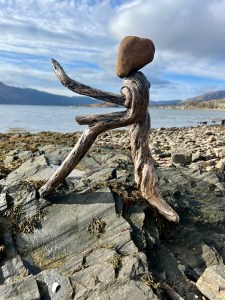
The European Land Art Festival celebrates the positive benefits of witnessing, or creating, land art, especially to children as a distraction to digital devices encouraging them to play freely in nature.
It tunes into the physical and mental health benefits of being in nature – Land Art is the ultimate mindful practice. Stone stacking is very healing as you have to focus completely on the task in hand. Nature provides the materials.
Dunbar artist James Craig Page co-founded the festival, which began life as the European Stone Stacking Championships but has evolved into the European Land Art Festival in Dunbar.
The festival has become a satellite qualifying event for the World Rock Stacking Championships in Llano, Texas. James is also a keen painter and his artwork (pictured) can always be seen in various locations around his hometown. July 9-14, facebook.com/europeanlandartfestival/
LOCALS LOVE
Dunbar, on the North Sea Coast of East Lothian, is the perfect backdrop for the European Land Art Festival with its rugged coastline and beautiful countryside. Explorer, conservationist and naturalist John Muir was born in Dunbar and a nature reserve is named after him which is rich in wildlife, birds and plants and includes some of the most spectacular East Lothian coastline. visiteastlothian.org
8. Full of Eastern promise

Frinton-on-Sea in Essex, which charmed the Victorian well-to-do, is not the kind of place you might expect to find contemporary art. But this sedate seaside town is full of surprises.
Oasis, on the town’s famous Connaught Avenue, is owned and run by Frinton Free Church with a cafe, community groups and clubs as well as an art gallery. Since 2016 local coastal landscape artist Simon Carter has been running exhibitions and challenging preconceptions about contemporary painting from this community space.
Simon’s work is in collections here and abroad, including the Yale Centre for British Art and five museums in China. He co-founded the artist collective Contemporary British Painting in 2013 and is President of Colchester Art Society.
Exhibitions are planned to show diverse approaches to painting, print and photography, but the intention is always to gently push boundaries and challenge preconceptions. Recent exhibitions have included artist and musician Karl Bielik (pictured), painters Henry Ward and James Faure Walker, printmaker Elizabeth Morris from Mersea Island, Brighton-based Julian Brown, art tutor David Page and Emily Ball from West Sussex.
The latest exhibition at Oasis, The Beautiful East, has work by 20 artists celebrating the local area and the community of artists. July 27-August 30, frintonfree.com
LOCALS LOVE
Frinton is the resort that time forgot with its Victorian-style beach huts, elegant Esplanade and tree-lined avenues. The sandy beach is quiet and secluded and you are not far from the Great Holland Nature Reserve which, until half a century ago, was gravel pits. There are walking paths through woodlands and by the water you might spot a kingfisher, little grebe or coot. essexwt.org.uk
9. Memories of maps

A new display at the National War Museum in Edinburgh Castle will explore the purpose, importance and personal significance of military maps in the Second World War when over 36 million photographs and 342 million maps were produced by the British Armed Forces alone.
The display was inspired by a painting of Major Robert W Cairns by his daughter, Joyce W Cairns. He served in various posts and locations during the war and was responsible for organising the travel network for the movement of troops and supplies across the inadequate and congested roads of Northern Europe.
The exhibition Maps: Memories of the Second World War explores the purpose of a map as much more than just a physical or a functional object and reveals the stories of the people who kept these maps as a memory of a personal journey.
One unusual object featured in the display is a silk dress (pictured) made from escape and evade maps, on loan from Worthing Museum and Art Gallery. Fabric maps were issued to pilots and Special Forces in the event that they were shot down, trapped behind enemy lines and needed to escape. Silk is waterproof, quiet to open and easy to hide or sew into clothing. When the maps no longer served their original purpose, this valuable material was used to make clothing in an era of post war rationing. Until January 25 2026, nms.ac.uk
LOCALS LOVE
The Royal Botanic Garden Edinburgh grew from a physic garden, growing medicinal plants. It’s now one the largest botanic institutions with a herbarium housing about three million living specimens and preserved plants and a core collection that represents at least half of the world’s species of flora. Set in 72 acres including Victorian glasshouses and a Chinese garden with waterfalls, pond and pagoda. rbge.org.uk
10. On the waterfront
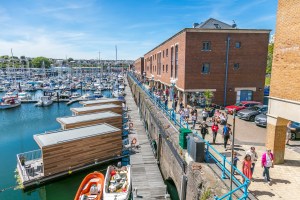
Overlooking Pembrokeshire’s Milford Marina, the waterfront at Milford Haven will take on a festival atmosphere this summer with a series of free events. Kicking off the activities, on July 6, the family focused Milford Haven Carnival will see street entertainers, decorated floats and dressed-up walkers parade through the town to the waterfront finale with live music and pop-up refreshments.
The festivities continue into August with the Milford Haven Street Food Festival (August 9-11). Renowned for its independent food scene, alongside the resident cafés and restaurants, an impressive pop-up street food market will line the marina front over the three-day event with local and exotic flavours and aromas. Adding to the atmosphere, there will be a party-like vibe with free musical entertainment and activities. milfordhavenwaterfront.co.uk
LOCALS LOVE
Milford Haven hasn’t forgotten its connection to the thriving fishing industry of the past. Milford Haven Museum, housed in a former whale oil warehouse, charts the history of Milford from the Vikings and the first whalers from Nantucket (who came here in the 18th century seeking their fortune in the whaling gold rush), through to the boom in the fishing industry, to the present day and the modern energy port. milfordhavenmuseum.co.uk
Coming soon…
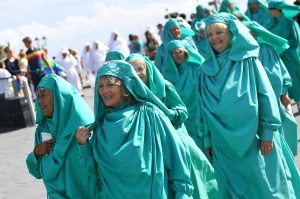
The National Eisteddfod of Wales is held at a different location every year – this August it’s in Rhondda Cynon Taf. The celebration of Welsh language and culture has everything from music to literature, a full programme of competitions and Wales’ premier contemporary art gallery.
Ynysangharad Park in the centre of Pontypridd will provide a focus for most activities and pavilions, with the town also playing an important role during the week, creating an urban, alternative and exciting Eisteddfod, combining the local area with the festival itself.
Local residents can apply for free entry and food vouchers, thanks to a £350,000 grant from the Welsh Government which will help make the festival accessible to lower income families.
Competitions include brass bands, visual arts, music, dance, folk, recitation, literature and theatre. August 3-10, 2024, eisteddfod.wales

